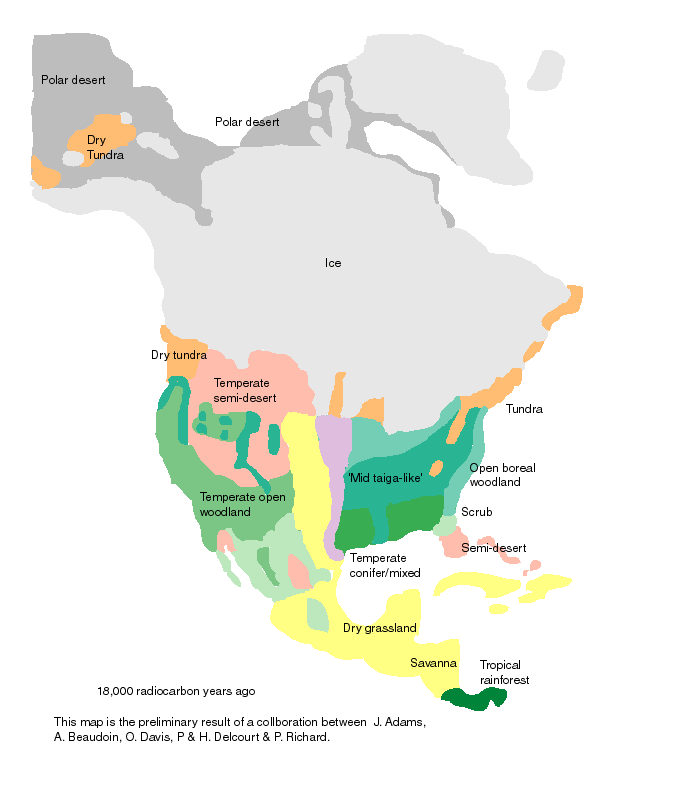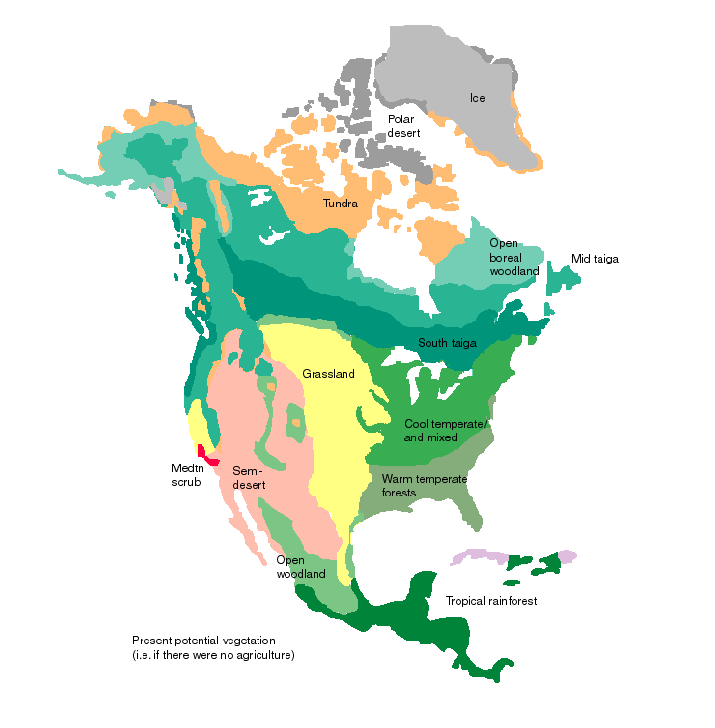This is showing that except for very brief time periods, Siberia and the Arctic Ocean off the coast of Siberia was ice free during much of the Ice Age, much more then North America.
For example look at this map of North America 18,000 years ago:
 http://www.esd.ornl.gov/projects/qen/nercNORTHAMERICA.html
http://www.esd.ornl.gov/projects/qen/nercNORTHAMERICA.htmlNotice Alaska and the part of Siberia on that map are "Polar Deserts" NOT Covered by ice. In simple terms cold Tundra but almost no snow or ice. Which is strange given how far SOUTH the Glaciers were at that same time period.
This also affects oil exploration, if you look at about where the Alaska Oil Field is you will notice NO ICE. Further East in Canada where the Canadian Natural Gas Fields are located, you will see it was covered by ice, maybe up to a mile thick. Oil if it falls below about 20,000 feet, is converted to Natural Gas by the Heat of the earth. Thus the North Slope NOT being under Ice in the last Ice Age, has oil, while the Canadians fields, being pushed down further by the weight of the ice sheet over them, is Natural Gas. The arctic Wildlife preserve that the oil companies want to open up, is between the two fields, and could be more Natural Gas then oil depending on how far it sank do to the weight of the North America Ice Sheet to its east.
Compare the above with North America today:

See how Siberia's Ice Sheet was smaller then North America even at the height of the Ice Age. See the following which has a good map of the two ice Areas and the Ice that covered them:
http://en.wikipedia.org/wiki/Ice_ageHere is a reference to a book about Siberian Ice Sheets (Probably more then you need, but interesting):
http://books.google.com/books?id=8CFiT3qbN5UC&pg=PA41&lpg=PA41&dq=Siberian+Ice+Sheet&source=web&ots=6VkbRJ_CkE&sig=BIafONXpIGyANNguBb_dMTz2GRg&hl=en&sa=X&oi=book_result&resnum=3&ct=result#PPA51,M1In short, this may end the dispute of when Siberia became ice free and how long that occurred, this evidence supports only brief periods of Siberian Ice Sheets, which can explain why the waterway through the Arctic Ocean of Siberian has been Navigable since at least the 1930s (With the use of huge Ice breakers), while the North American North West Passage, is NOT usable commercially (Through some War Ships with Ice Breakers have made it through).